Alaska has over three million lakes, 12,000 rivers, and an estimated 6,640 miles of ocean coastline. Below the surface swim some of the world’s most abundant, healthy, all-wild fish, including salmon, halibut, and eulachon. Fish sustained Alaska Natives for millennia and continue to represent food and economic security for many people. Alaska Park Science 19(1): 2020
-
Article 1: Below the Surface: Fish and Our Changing Underwater World
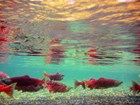
Alaska has over three million lakes, 12,000 rivers, and an estimated 6,640 miles of ocean coastline. Below the surface swim some of the world’s most abundant, healthy, all-wild fish, including salmon, halibut, and eulachon. Fish sustained Alaska Natives for millennia and continue to represent food and economic security for many people. Alaska Park Science 19(1):2020. ALSO, DOWNLOAD A PDF OF THE FULL ISSUE HERE. Read more
-
Gates Of The Arctic National Park & Preserve
Article 2: Salmon Sleuths: GPS-collared Bears Lead Researchers to Unknown Salmon Streams in Interior Alaska

Movement data from GPS-collared bears provides valuable information to improve conservation efforts not only for bears, but also for salmon. This study describes the discovery of an unexpected relationship between bears and salmon in the Arctic Interior and the out-sized role salmon have on diet and movement patterns of grizzly bears living in a nutrient-limited system. Alaska Park Science 19(1):2020 Read more
-
Gates Of The Arctic National Park & Preserve
Article 3: Fish Inventories of the Upper Kobuk and Koyukuk River Basins

Fish inventories in the Brooks Range added hundreds of new miles to the Anadromous Waters Catalog, improving overall knowledge of fish species assemblage, distribution, and abundance in the region. This information will help guide management actions on the proposed Ambler Road and future studies of aquatic resources. Alaska Park Science 19(1):2020 Read more
-
Glacier Bay National Park & Preserve
Article 4: Marine Protected Area Research in Glacier Bay Leads to Insights into Halibut Behavior
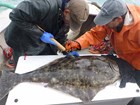
The halibut movement studies conducted in Glacier Bay as part of marine protected area research provide important insights into halibut behavior that may have implications for the management of halibut at larger scales. High rates of year-round residency combined with winter commercial fisheries closures when fish migrate suggest that the Glacier Bay MPA could provide year-round refuge from commercial harvest for both resident and migrant fish. Alaska Park Science 19(1):2020 Read more
-
Glacier Bay National Park & Preserve
Article 5: SONAR Project Provides Coho Salmon Baseline for Glacier Bay National Park and Preserve
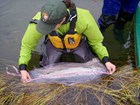
Despite concerns about increased harvest, there is no indication that recreational fishing is jeopardizing a natural and healthy coho salmon population in the Bartlett River of Glacier Bay National Park and Preserve. High-resolution sonar and sampling techniques provide a solid baseline by which salmon population numbers can be monitored into the future. Alaska Park Science 19(1):2020. Read more
-
Article 6: Environmental DNA: An Emerging Tool for Understanding Aquatic Biodiversity

Aquatic surveys are important management tools, but are expensive and difficult to complete. Environmental DNA techniques are a promising tool to identify fish and other organisms present from water samples. This new technique is being developed to improve long-term monitoring of fish and other aquatic species and for early detection of invasives. Alaska Park Science 19(1):2020. Read more
-
Klondike Gold Rush National Historical Park
Article 7: Eulachon: A Little Fish with Many Names and a Big Ecological Impact

Each spring in Southeast Alaska, wildlife and people alike eagerly await the same phenomenon—schools of a small, silvery, oily fish. But we know very little about the dynamics of the fishery, especially in the Taiya River in the park. This two-year study pointed to further research questions. Alaska Park Science 19(1): 2020. Read more
-
Katmai National Park & Preserve
Article 8: Zooarcheology of a 3,500-year-old Fishery on the Katmai Coast
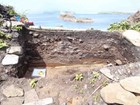
Zooarcheology—the study of animal remains from archeological sites—reveals more than just a list of food items, it tells us how our natural surroundings and our climate have changed over time, how past peoples sustained their resources or over-harvested them, how our technology has advanced to allow our survival, how we relate to animals and each other, and how some things have remained the same. Alaska Park Science 19(1):2020. Read more
-
Katmai National Park & Preserve
Article 9: The Role of the Diamond NN Cannery in Interpreting the History of the Naknek River Fishery
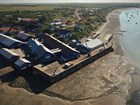
The NN Cannery was one of the longest-running canneries. It employed hundreds of residents and thousands of transient workers who produced more canned salmon than any cannery in Alaska. Contained in its century-old buildings are stories of the historical manifestations of capitalism, incorporation, industrialization, immigration, world wars, global pandemics, statehood, resource management, unionization, segregation, and equal rights. Alaska Park Science 19(1):2020. Read more
-
Article 10: So Goes the Snow: Alaska Snowpack Changes and Impacts on Pacific Salmon in a Warming Climate

Snowpack, or annual persistent snow, affects hydrology, water temperature, and other freshwater characteristics. As air temperatures generally increase, snowpack and the many factors it influences will change, but in different ways in different watersheds. The rapid rate of climate change impacts exceeds what we know salmon have been able to adapt to in the past. It is even more important to reduce additional stressors on fisheries. Alaska Park SCience 19(1):2020. Read more
-
Article 11: Permafrost Carbon in Stream Food Webs of Arctic Alaska
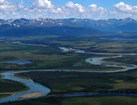
Across the Arctic, permafrost stores vast amounts of organic carbon, much of which has been kept “in the freezer” for thousands of years. When permafrost thaws, this ancient carbon can be released into the atmosphere as the greenhouse gases carbon dioxide and methane. It can also be transported by groundwater flow and erosion from soils to streams and lakes. What impact does this old carbon have on aquatic organisms and ecology? Alaska Park Science 19(1):2020 Read more
-
Article 12: Drivers of Mercury in Top-predator Lake Fish from Southwest Alaska Parklands
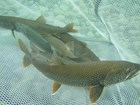
Some resident lake fish sampled from southwest Alaska parks have elevated concentrations of mercury (mostly methylmercury, a potent neurotoxin and endocrine disrupter). Why do these fish —that inhabit some of the most remote and supposedly pristine waters in North America—have such elevated mercury levels? Answering this question requires an understanding of mercury cycling, or the processes by which mercury moves through the environment. Alaska Park Science 19(1):2020. Read more
-
Denali National Park & Preserve
Article 13: Eldorado: Treasure, Tragedy, and Triumph in the Kantishna Hills
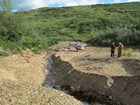
Where legacy mining effects have impaired stream water quality in Alaska parks, the NPS is developing restoration techniques. Understanding the potential for recovery in these streams will help the NPS to prioritize those areas where intervention is needed over those areas that are recovering naturally, where disturbance might do more harm than good. Alaska Park Science 19(1):2020. Read more
-
Article 14: Elodea: Alaska’s First Invasive Aquatic Plant Continues to March Across the State
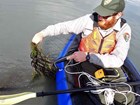
There are over three million lakes and 12,000 rivers in Alaska, many of which harbor prime habitat for an invasive aquatic plant, Elodea. Alaska’s parks encompass a substantial portion of this habitat and include some of Alaska’s most iconic lakes and rivers. While no infestations have yet been found in parks, we are developing detection methods and monitoring so we can address it early, if we find it. Alaska Park Science 19(1):2020. Read more
